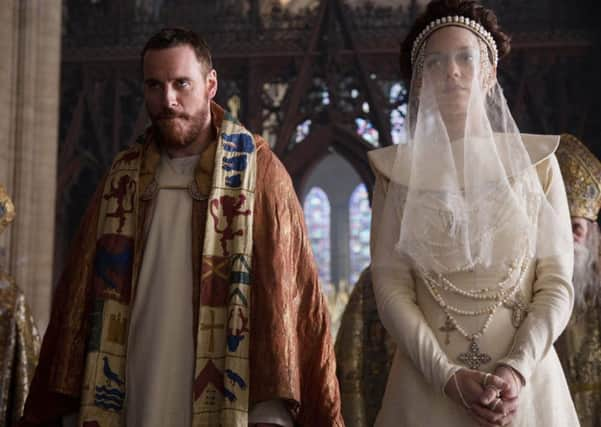Margery McLennan: Like Macbeth, Moray has vaulting ambition


The Outlander phenomenon has been generating headlines in the international press and pounds for the Scottish economy since 2014. When you’re the operator of a castle, or manager of an estate that’s featured on the silver screen, it’s incredibly good news for business.
But what if you’re not?
When Macbeth was released in late 2015, members of the Moray Economic Partnership had two choices: shy away from getting involved, aware that no filming took place in Moray, or elbow our way onto centre stage and turn the film into a multimillion pound opportunity.
Advertisement
Hide AdAdvertisement
Hide AdAs the home of the real Macbeth, Moray has much to offer film fans who are willing to travel. We might not have the locations they saw on screen, but we have the real Macbeth’s history and a determined collection of businesses, organisations and residents who want more people to experience the best that Moray has to offer. The Moray Economic Partnership seized on the opportunity presented by Macbeth and the region is still reaping the benefits. Our ability to do so is definitely a result of our members’ willingness to work together, in a flexible and creative way, to promote Moray.
Before the film was released, Moray Speyside Tourism and VisitScotland met to discuss how our members could support and enhance all activity around the film’s release. Working together, we developed a programme of activity that positioned Moray as the home of the true Macbeth: a place where visitors could distinguish the myth from the man.
Some initial coups helped us start the campaign with a bang. Studio Canal agreed to loan us costumes from the film to be on display at locations across Moray for a number of months. A constant stream of press activity resulted, driving visitors to several attractions across the region – an astute move that meant everyone had a share of visitor numbers. Brodie Castle, Elgin Museum, Falconer Museum, Johnston’s of Elgin and Moray Art Centre all hosted the costumes.
Events across Moray inspired global press and tourists to visit Moray. Large outdoor performances, a trail that marked the history of the real Macbeth, mobile apps, talks and tours, a dedicated website and constant innovation and creativity from Moray’s business, political and civic spheres all played a part in delivering a record number of visitors to the area. Our efforts generated over £300,000 of media coverage across the world.
The key to our success has been the willingness of everyone in Moray to respond quickly and effectively to ideas. We’re a close-knit region and it’s in our collective interests to develop a sustainable economy. Would other areas be able to quickly develop projects or ideas that required effort from dozens of operators and organisations? I hope so, but I believe the cooperation and optimism we have in Moray is unique.
We cooperate locally, but we also make the most of our national and international contacts. I’d urge any economic or tourism organisations to make the most of VisitScotland. It has access to a global network that brings real benefits to more remote parts of Scotland. The team at VisitScotland was keen to ensure that Moray, as well as Skye and other locations where Macbeth was filmed, made the most out of the opportunity. I don’t think they were prepared for how active Moray Speyside Tourism would be.
Films like Macbeth and TV series like Outlander offer huge opportunities for villages, towns, cities and regions across Scotland. We must ensure that we make the most of them and that we welcome them.
The Moray Economic Partnership model of working with the best interest of the whole region, not individual businesses, in mind, means we continue to attract thousands of additional visitors to our hotels, restaurants, shops, museums, castles and other attractions. We’ll reap the economic benefit for years. Moray tourism was on the up before Macbeth; from 2013-2015 our tourism revenue increased by 12 per cent, which equates to over £10million. Once the data from this year becomes available we’ll surely see its true impact.
Advertisement
Hide AdAdvertisement
Hide AdMoray is rich in heritage and culture and boasts some of the most beautiful scenery in Scotland. We might not have been the star of the show in Michael Fassbender’s Macbeth, but we definitely stole the spotlight in how we promoted Moray.
• Margery A McLennan is executive director of the Moray Chamber of Commerce and chair of the tourism sector of Moray Economic Partnership www.moray.gov.uk